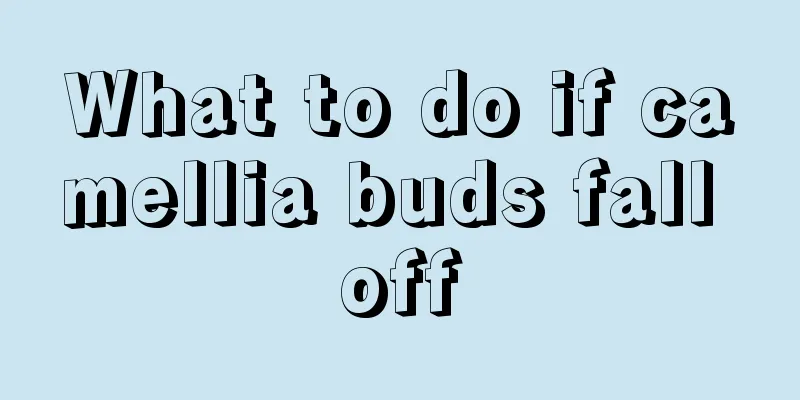What to do if camellia buds fall off

The causes and prevention of camellia bud dropCamellia is afraid of wind and prefers a growing environment with sunlight, air circulation, warmth and humidity. The soil requirements are well-drained, loose and fertile sandy loam, either loess or humus soil. According to the growth habits of camellia, we can definitely find out the reason for bud drop: 1. Unsuitable growing soilThe combination of soil is definitely the reason that affects its growth. If the soil is used improperly, such as using overly acidic soil or calcareous soil, the soil will lack trace elements such as iron and sulfur, which will lead to poor growth of camellia and then cause the camellia buds to fall. Prevention and treatment methodsIf the buds fall off due to unsuitable soil, you should spray ferrous sulfate solution into the soil to relieve the acidity of the soil. After a few days, you can water the plant and then maintain it normally. 2. Poor temperatureThe growth temperature of camellia is generally required to be between 20 and 32 ℃. If the temperature is too high or too low, the camellia will stop growing and the buds will gradually fall. In the cold winter, if the temperature exceeds 16 degrees, the plant will sprout prematurely and cause bud drop. If the temperature is below 5 degrees, it will stop growing and the buds will fall off. The temperature must be kept balanced and cannot fluctuate. Prevention and treatment methodsIf the temperature is too low, lower than the temperature required for its growth, you can place the camellia in a sunny place. When it is cold at night, you can keep it away from windows to avoid being blown by drafts. 3. Poor ventilationCamellia requires a good air permeability in its growing environment, so when it is maintained indoors in winter, the plant will not be able to breathe due to lack of ventilation because the windows are not opened frequently. Over time, the flower buds will gradually wither. Prevention and treatment methodsPay attention to ventilation and place it away from windows, but be sure to ensure the normal growth temperature when ventilating. Ventilate it for a short period of time and it will be fine. 4. Pests and diseasesThe main diseases and pests of camellia are sooty mold, gray spot, aphids, rust mites, etc. These diseases and pests can damage the leaves and buds of camellia, causing the buds to fall off. Prevention and treatment methodsThe most effective way to deal with pests and diseases is to spray them with medicine to kill them directly. Determine what disease it is based on its symptoms and then prescribe the right medicine. Do you know the reasons and prevention methods of camellia bud drop? Try it now! 【Flower Growing Encyclopedia】is a contracted author of Toutiao |
<<: Common maintenance issues of Dieffenbachia
>>: What to do if Pyracantha does not bear fruit
Recommend
How to water Phalaenopsis
1. Spring At this time, all things come back to l...
Precautions for watering azaleas, how often should you water azaleas?
1. Watering time The watering time is not fixed, ...
Is the pink palm poisonous?
1. Toxic The flowers of the pink anthurium are sl...
How and when to plant potted gourds Planting techniques for potted gourds (key points)
Suitable planting time for potted gourds Potted g...
When is the best time to transplant magnolia?
Magnolia is a plant that is not tolerant to trans...
When is the best time to plant seedlings?
Proper planting and management of seedlings is th...
How many kilograms of cherry are generally produced per mu? How much is the net profit per mu?
Cherry yield per mu There are relatively few orch...
Are grapes shade-loving or sun-loving plants?
Do grapes prefer shade or sun? Grapes are a sun-l...
How many pounds of onion can be produced per mu?
Onion yield per mu The yield of onions will be af...
How to grow Paris polyphylla seedlings
1. Soil selection If you want to grow Paris polyp...
What are the cultivation methods and precautions of Mexican iron tree?
Mexican iron tree cultivation method The Mexican ...
Cultivation and pruning of Kalanchoe
Kalanchoe is loved by many flower lovers for its ...
Cultivation methods and precautions of Chinese fern
1. Maintenance methods 1. Temperature: It is a wa...
Where do avocados grow? Where do avocados grow?
Avocado growth habits Avocado prefers an environm...
The climate and environment for the growth of kudzu root
Requirements for planting kudzu root 1. Temperatu...









